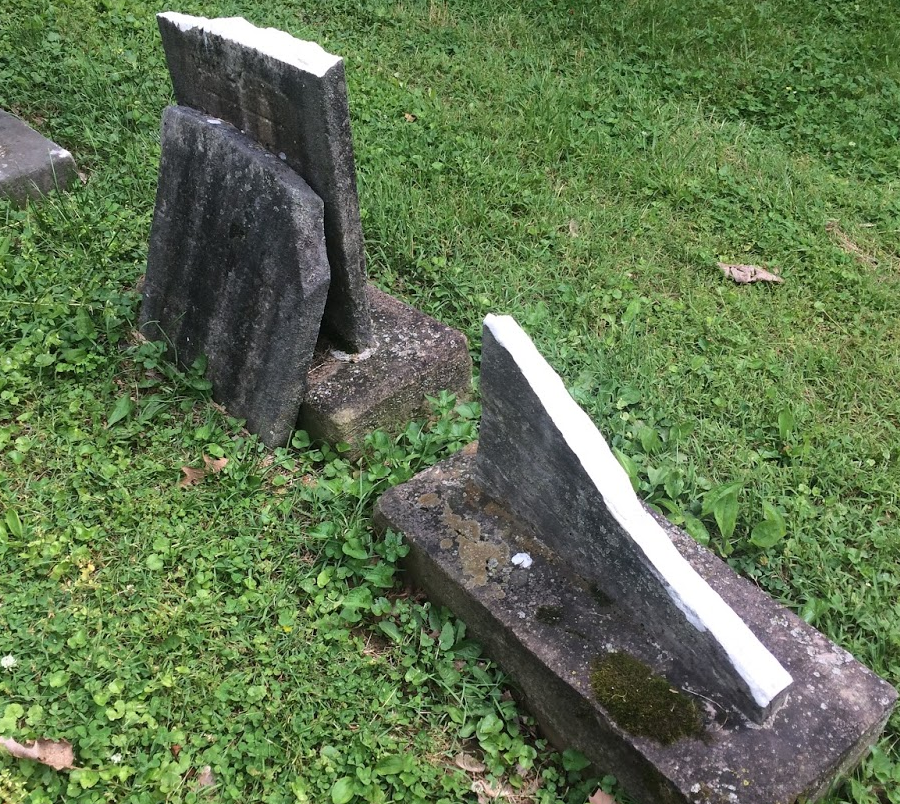
a broken tombstone reveals how white marble can develop a dark patina from soot, acid rain, and lichen

a broken tombstone reveals how white marble can develop a dark patina from soot, acid rain, and lichen
Formations including marble in Virginia date back to the Cambrian Period and Proterozoic Eon. Quarries in the Candler and Alligator Back formations have produced marble for commercial use, including grinding it up to make agricultural lime. Rock locally called "marble" has been produced in Loudoun, Nelson, Buckingham, Campbell, Appomatox1
Marble used in fancy buildings in Virginia has been imported from other states or overseas. The marble used in the Tomb of the Unknown Soldier in Arlington Cemetery came from the Colorado Yule Marble quarry, west of Aspen. Replacement stone was quarried in 2003 to replace cracked stones in the tomb.2
After the British burned the US Capitol building in 1814, architect Benjamin Latrobe used the conglomerate for columns in the reconstructed chamber for the House of Representatives. That Old House Chamber room is now the National Statuary Hall. Latrobe obtained his building material from a quarry on the Maryland side of the Potomac River, about two miles upstream from White's Ferry (known as Conrad's Ferry at the time).
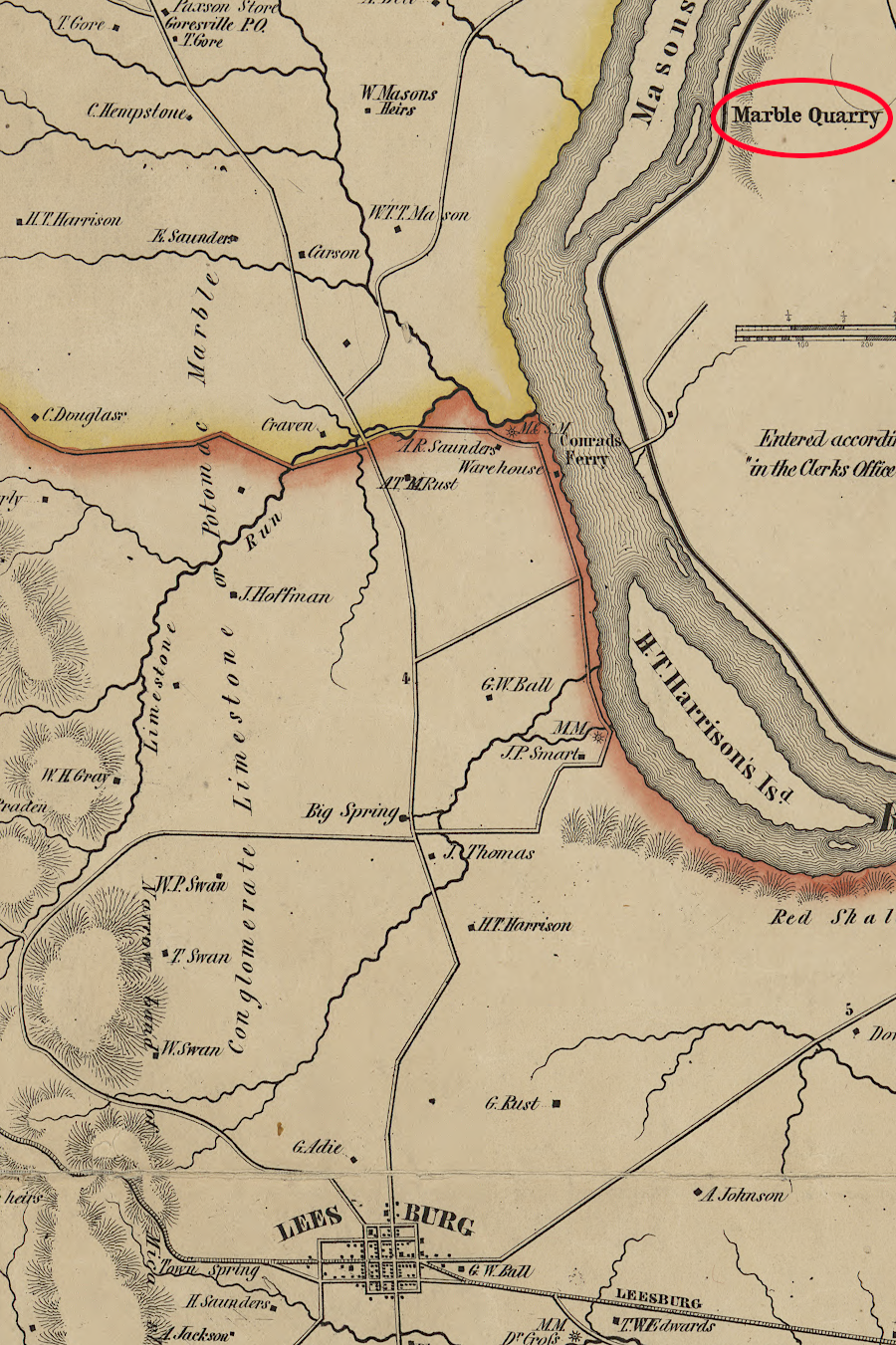
Potomac Marble used for restoration of the US Capitol after 1814 was quarried in Maryland and shipped via the Chesapeake and Ohio (C&O) Canal
Source: Library of Congress, Map of Loudoun County, Virginia (by Yardley Taylor, 1854)
Though there are reports of a Loudoun source, no quarry site has been found yet. The pond at Isaak Walton Park in Leesburg was dug in 1955, so despite local tradition that site was not the source for Latrobe's restoration of the Capitol starting in 1817.
The Potomac marble was quarried in Loudoun County for use as agricultural lime. At one point, it was ground up for use in terrazzo floors. Quarrying ended in 1949 after a flood destroyed the Virginia Marble Company bridge across Goose Creek.
Transportation costs were high, because Goose Creek was not navigable where the marble was quarried. Leesburg voters rejected a proposal to fund an extension of the Washington and Old Dominion Railroad in order to expand production along Goose Creek.3
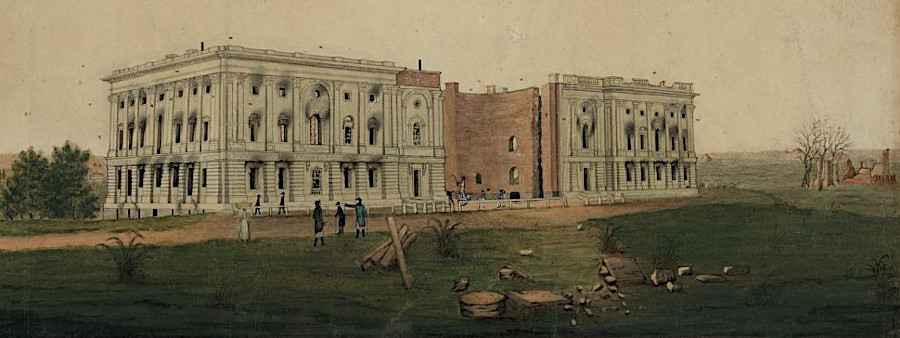
the US Capitol was rebuilt after the British burned it in 1814
Source: Library of Congress, U.S. Capitol after burning by the British (George Munger, 1814)
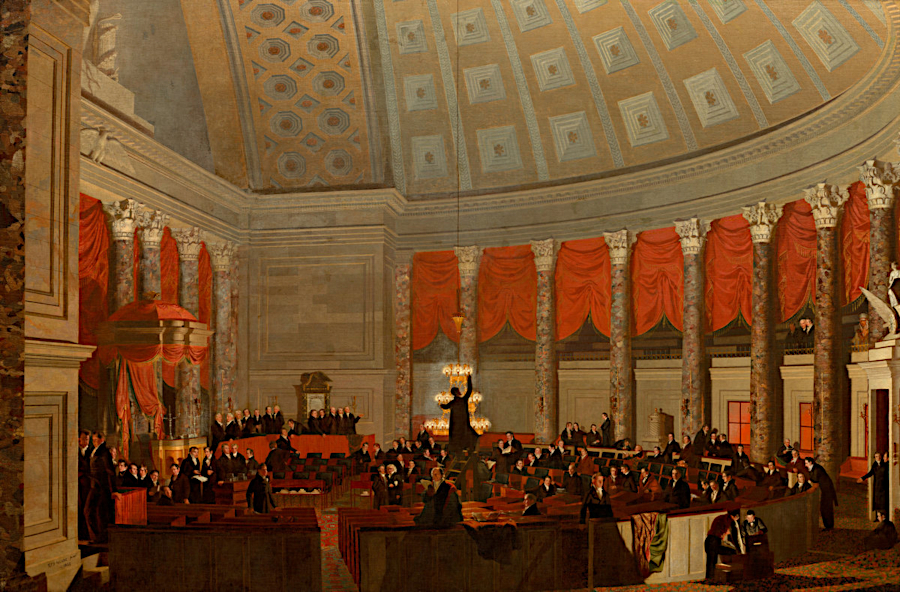
Benjamin Latrobe chose "Potomac marble" for columns in the House of Representatives, when rebuilding the US Capitol
Source: National Gallery of Art, The House of Representatives (by Samuel F. B. Morse, 1822)
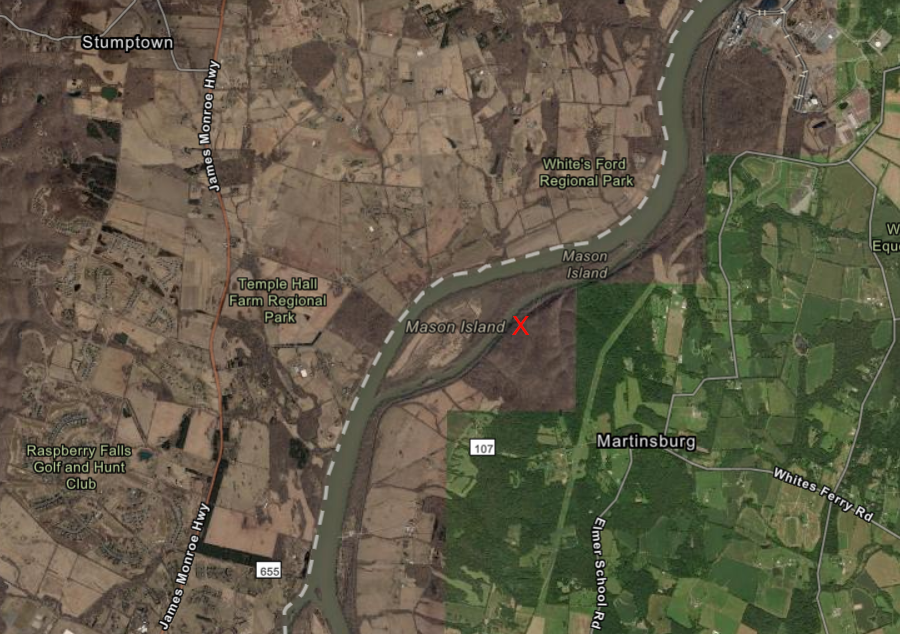
Benjamin Latrobe acquired his Potomac "marble" from a quarry in Maryland (red X)
Source: ESRI, ArcGIS Online
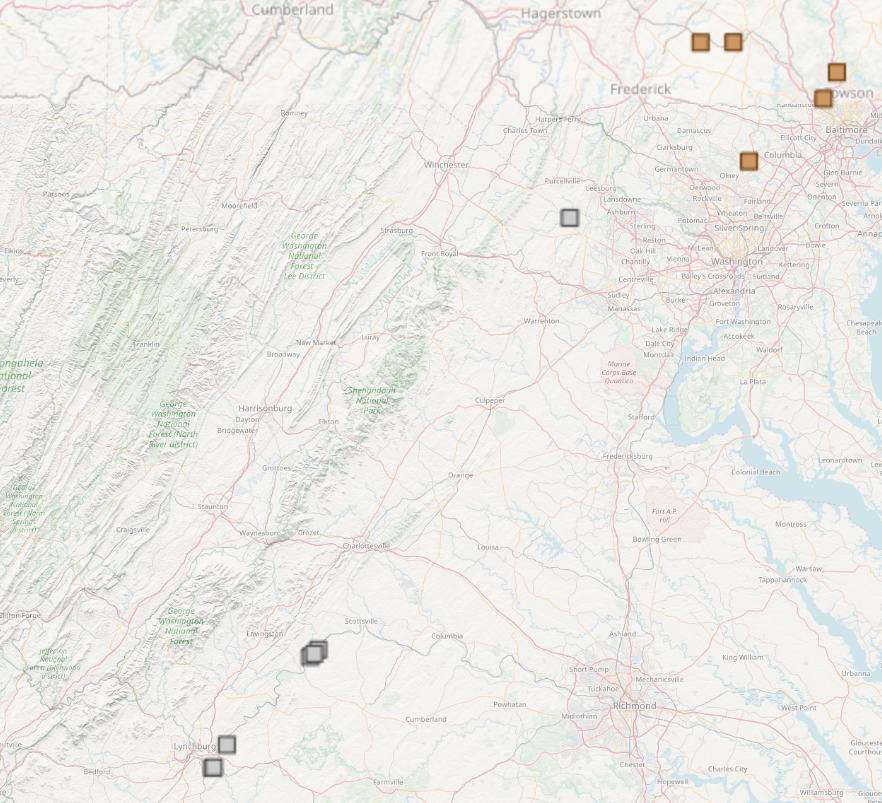
"marble" has been quarried commercially in Virginia, on the east flank of the Blue Ridge
Source: US Geological Survey, Mineral Resources Data System